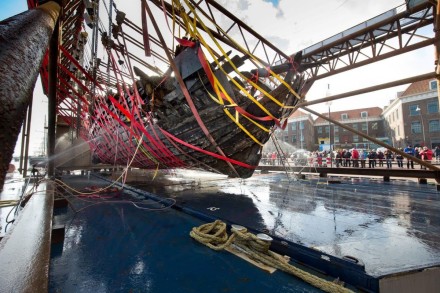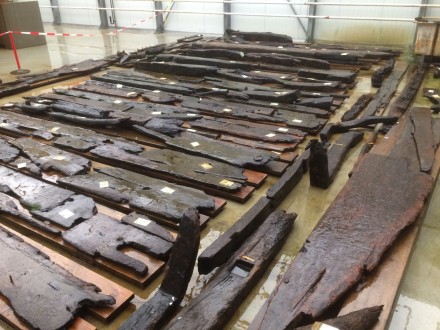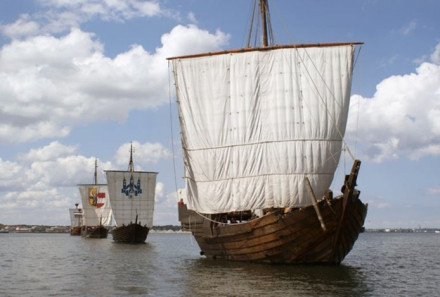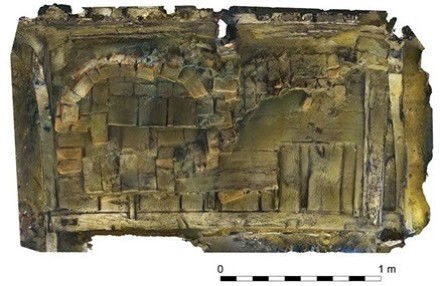History
Archaeological Description
The IJsselkogge ('the IJssel cog') was found in 2009 with the use of sonar at the bottom of the river IJssel, near Kampen, in the Netherlands. In 2011 and 2012, the first diving campaigns were undertaken on the wreck. Several loose parts of the cog, a barge-like ship and a boat were found then. The majority of the IJsselkogge was buried in the bottom of the Ijssel, lying over starboard at an angle of about 20 degrees.
The wreck is one of a few fifteenth century cog-like vessels found in Northern Europe, and is unique due to the preserved condition of the vessel. The wreck lies in the fresh water of the river IJssel, which means that it is not at risk by the shipworm (teredo navalis) which can't live in these circumstances. The wreck was also almost completely buried in the river bed, which contributed to the high level of preservation.
Asides from the completeness of the wreck, parts of the rigging, interior carpentry and a large array of interesting finds were preserved. The are, amongst other things, the staves of a barrel, blocks, weaponry and a whetstone.
The cog was presumably sunk on purpose in a side arm of the Ijssel to close it off, together with the other two wrecks. This action fits withing the context of the IJssel in the 15th century. The outflow of the river had decreased dramatically and it was under threat of becoming unnavigable. Damming the river arm had the goal of leading all the water through the main channel in the IJssel delta, to keep this deep enough. Based on dendrochronological research it has been established that these water works took place in the winter of 1450/51.

In March 213, the Department of Waterways and Public Works and the Cultural Heritage Agency of the Netherlands (RCE) decided to excavate and entirely lift the IJsselkogge. This assignment was performed in 2015 and 2016 bij a working combination of ADC Maritiem, Baars-CIPRO and HEBO Maritiemservice. The research report was finished in 2018.

Description
The IJsselkogge was built shortly after 1420. A cog is a type of ship that appears on the scene in Northern Europe for the first time in the 10th century and it was used on a large scale from the 12th century. The ship type is mainly associated with seafaring in late medieval Europe, and especially with the Hanseatic League. Cogs were equipped with a central mast and a single, square yard sail. They were spacious and seaworthy enough to take the route from Kampen to the Baltic.

| Length | 88 ½ feet (27 m) |
|---|---|
| Width | 26 ¼ feet (8 m) |
Status
A digital reconstruction has been made of the IJsselkogge, which shows that the ship originally had a length from bow to stern of 27 meters and that it was 8 meters wide. From the study of the IJsselkogge, a biography emerged that shows that the ship had various functions: freighter, warship, supply ship and finally it ended up as a dam in the IJssel. Because it was sunk on purpose, it has been preserved well for six centuries.

References
- Nemo Kennislnk.
Scheepswrakkenparadijs in de IJsselbodem.